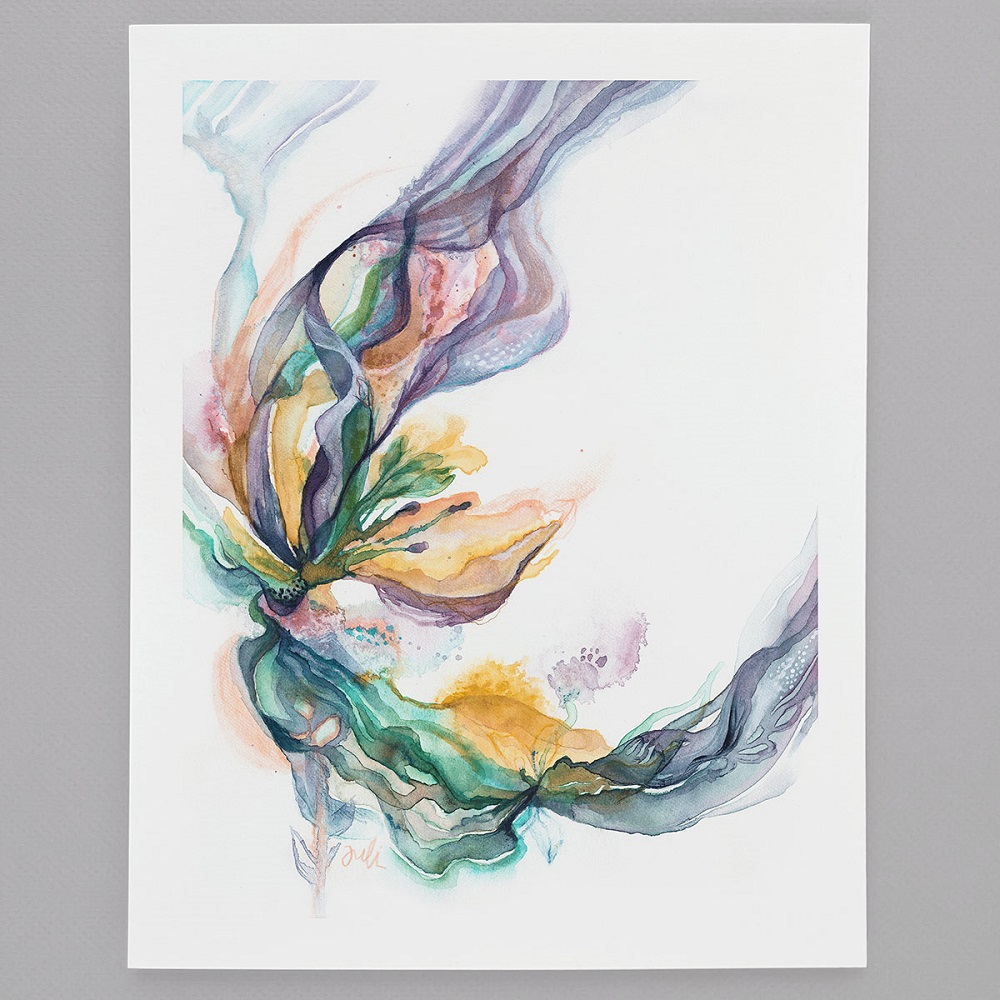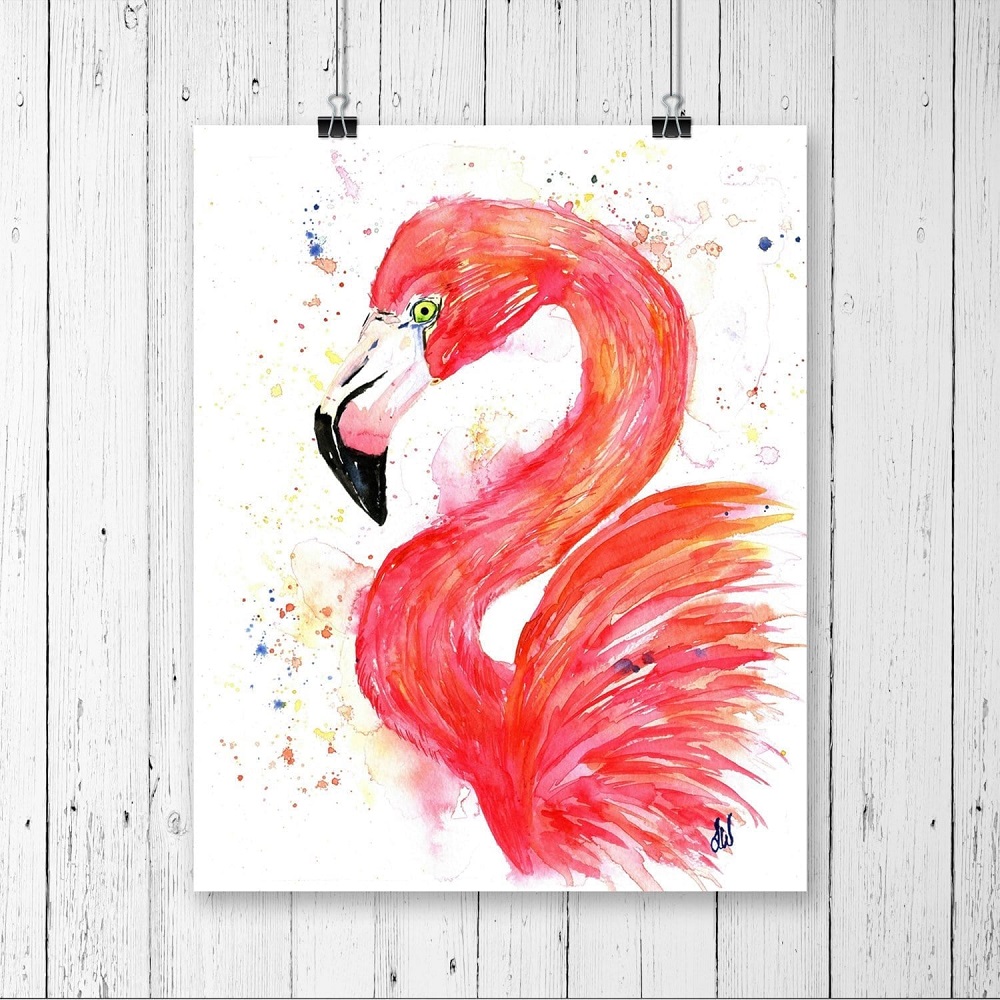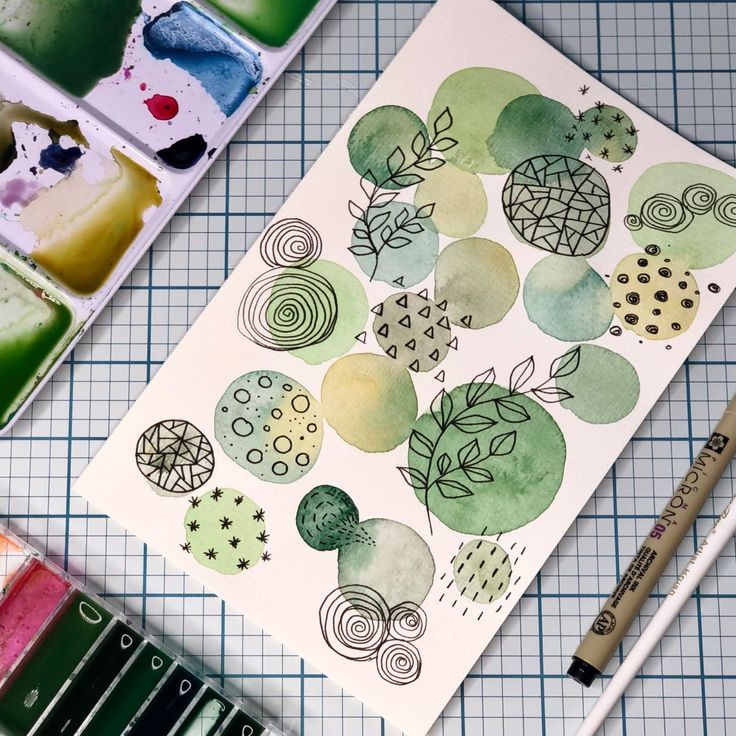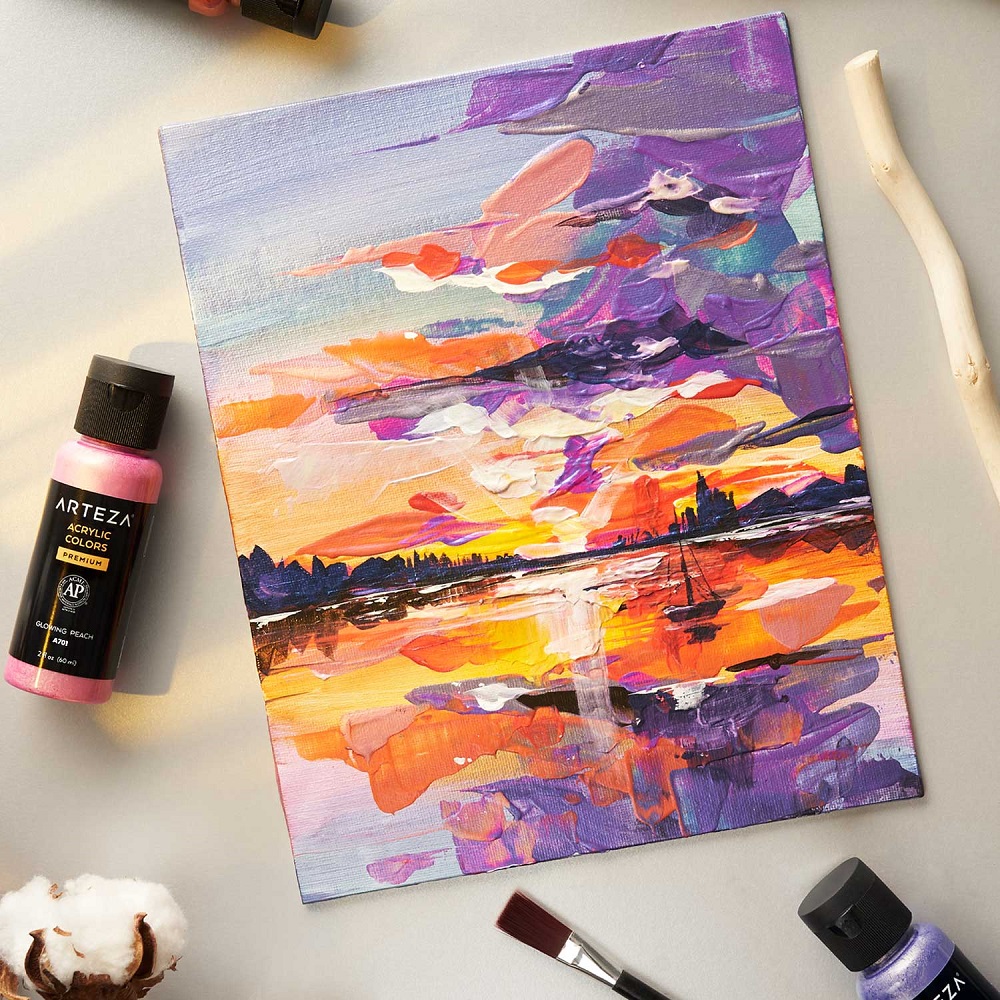Choosing between acrylic vs watercolor paints can be a significant decision for an artist. Each medium offers distinct characteristics, techniques, and challenges. This article will help you understand the differences between acrylic vs watercolor paints, including their composition, techniques, and suitability for various artistic styles, so you can decide which is right for you.
Understanding the Basics
Composition and Properties of Acrylic Paint
Acrylic paint consists of pigment suspended in an acrylic polymer emulsion. It is water-soluble but becomes water-resistant when dry. This quick-drying paint can be used on various surfaces, including canvas, wood, and paper. Acrylics are known for their versatility, durability, and vibrant colors.
The fast drying time of acrylic paints allows for quick layering and overpainting. This property makes them suitable for techniques that require building up textures or making rapid changes. Acrylics’ flexibility and adhesive qualities also ensure that the paint will not crack or peel over time.
Composition and Properties of Watercolor Paint
Watercolor paint contains pigment suspended in a water-based solution. Unlike acrylics, watercolors remain soluble in water even after drying. This characteristic allows for reworking and blending long after the paint has been applied. Watercolors are usually used on paper and are known for their transparency, luminosity, and subtlety.
Watercolors’ delicate nature makes them ideal for creating soft washes and gradients. The transparency of watercolors allows underlying layers to show through, enabling unique visual effects that are hard to achieve with other mediums. This makes watercolor a favored choice for artists who appreciate gentle color transitions and light effects.

Techniques and Application
Techniques with Acrylic Paint
Acrylics offer a wide range of techniques due to their versatility. Artists can use techniques like impasto, where paint is applied thickly to create texture, or glazing, where thin layers of transparent paint add depth and richness. Acrylics also lend themselves to mixed media, allowing for incorporation with other materials like pastels, charcoal, or collage elements.
Acrylics’ fast drying time can be an advantage or a limitation, depending on your style. Quick drying allows artists to layer without waiting long between stages, but it can also make blending challenging. Using retarders to slow drying time or working in smaller sections can help manage this property.
Techniques with Watercolor Paint
Watercolor painting emphasizes fluidity and transparency. Techniques include wet-on-wet, where colors blend seamlessly as they are applied to a wet surface, and dry brush, where minimal water is used for sharp, textured strokes. Watercolors are excellent for creating subtle gradients, soft washes, and intricate details.
Watercolors require careful control of water and pigment. The ability to lift and rework watercolors even after they dry offers flexibility but also demands precision. Mastering watercolor requires patience and practice, as the flowing nature of the medium can lead to unexpected results.

Suitability for Different Artistic Styles
Acrylic Paint for Bold and Diverse Art
Acrylics are ideal for bold, vibrant art that makes a statement. Their ability to cover large areas with intense colors suits abstract, modern, and pop art styles. The medium’s versatility allows artists to experiment with different textures, from smooth, glossy surfaces to rough, textured impastos.
Graphic artists and illustrators also benefit from acrylic’s strong, durable finish. Its adaptability means artists can shift between broad, expressive strokes and fine details without switching mediums. The quick drying time aligns with fast-paced, energetic creative processes, making it ideal for artists who enjoy spontaneous expression.
Watercolor Paint for Subtle and Expressive Art
Watercolors are perfect for art that emphasizes subtlety, light, and atmosphere. Their transparent layers and gentle color transitions make them suitable for landscapes, portraits, and delicate floral studies. The medium’s light, airy quality lends itself to capturing fleeting moments and delicate details.
Traditional and classical artists may find watercolors align well with their emphasis on intricate detailing and nuanced tones. The medium encourages a contemplative, patient approach, ideal for artists who enjoy building their work gradually. Watercolor’s ability to convey mood and atmosphere resonates with styles that value depth and emotion.

Practical Considerations
Environmental Factors
When considering practical aspects, think about the workspace and environmental conditions. Acrylics can emit fumes and may require good ventilation, especially when used with certain mediums or varnishes. Cleanup involves water but can be time-consuming due to the fast-drying nature of the paint.
Watercolors are more water-friendly and have minimal odor, making them suitable for enclosed spaces and shared environments. Their cleanup is simple, requiring just water. The ease of preparation and cleanup makes watercolor a convenient choice for artists with limited studio space or mobile setups.
Cost and Accessibility
Cost can also influence your choice between acrylic and watercolor. Initial investment for acrylic painting might be higher due to the need for various mediums, brushes, and canvases. However, acrylics often go a long way and provide durable, resilient results.
Watercolors generally have a lower initial cost. High-quality paper is essential, but the overall material requirements are fewer. Watercolors may be more accessible for beginners or hobbyists looking for a less costly way to explore painting.

Learning Curve and Skill Development
Building Skills with Acrylic Paint
Learning to use acrylics involves mastering quick-drying times and versatility. Beginners might find it challenging to blend colors smoothly due to the fast drying. However, acrylics are forgiving in layering and overpainting, allowing for easy corrections and adjustments.
Experimenting with different techniques helps develop skills quickly. Artists can explore textures, glazing, and mixed media to expand their creativity. Acrylics encourage experimentation, making them suitable for those looking to discover and refine their artistic style.
Building Skills with Watercolor Paint
Watercolors have a steeper learning curve due to their fluid and unpredictable nature. Mastery requires understanding water control, pigment concentration, and paper behavior. Mistakes are less easily covered, demanding precision and forethought in application.
Despite the challenges, the rewards are significant. Watercolor painting develops patience, precision, and an appreciation for subtlety. It builds skills in layering, blending, and creating effects unique to the medium. Artists with a patient, detail-oriented approach often find watercolor an enriching medium to explore.

Final Thoughts on Personal Preference
Matching Medium to Personality
Ultimately, the choice between acrylic vs watercolor can come down to your personality and artistic goals. If you enjoy vibrant colors, quick results, and experimentation, acrylic may be the right fit. Its versatility allows for broad creative freedom, aligning with bold, energetic approaches.
For those who value subtlety, precision, and a contemplative process, watercolor offers an excellent medium. Its ability to capture light, depth, and airiness resonates with artists who enjoy detailed, expressive work. The ongoing flexibility and potential for rework allow for a reflective, gradual creation process.
Experimenting with Both Mediums
Many artists find value in experimenting with both acrylic vs watercolor. Trying each medium can provide insights into your preferences and strengths. Combining techniques from both can also lead to innovative approaches and unique artistic expressions.
Workshops, online tutorials, and art communities offer opportunities to explore and learn from other artists. Engaging with both mediums not only diversifies skills but also enriches your overall artistic journey. Finding the right balance between acrylic and watercolor can enhance your creativity and expand your artistic horizons.
Versatility in Mixed Media Art
Combining Strengths
Exploring the versatility of both acrylics and watercolors can be particularly rewarding in mixed media art. Combining the strengths of each medium allows artists to create more complex, layered compositions. You can use acrylics for their opacity and texture to form the background and structure of your piece, then add watercolors for their translucency and subtle color variations. This approach not only enhances the visual richness of your work but also opens up new possibilities for creative expression.
Enhancing Creativity
Incorporating both mediums encourages you to experiment and break free from traditional boundaries. By blending acrylics with watercolors, you can discover unique effects and textures that add depth and dynamism to your projects. This experimentation fosters a greater understanding of how different materials interact and inspires innovative artistic solutions. Whether you’re creating abstract works or detailed illustrations, the combination of these two mediums can help elevate your art to new levels.
Conclusion
Choosing between acrylic vs watercolor paints involves considering their unique properties, techniques, and suitability for different artistic styles. Acrylics offer versatility, durability, and vibrant colors, making them excellent for bold and experimental art. Watercolors provide subtlety, transparency, and the ability to convey light and atmosphere, ideal for expressive and detailed work.
Practical aspects such as cost, ease of use, environmental factors, and personal preferences also play significant roles in the decision-making process. Ultimately, both mediums have their own set of challenges and rewards, and experimenting with each can help you discover which aligns best with your artistic vision. Embrace the journey of exploration and let your creativity flourish with the medium that suits your style.